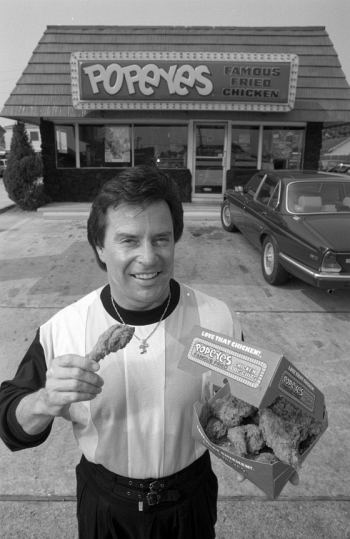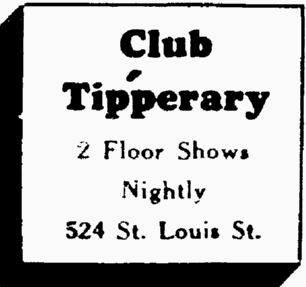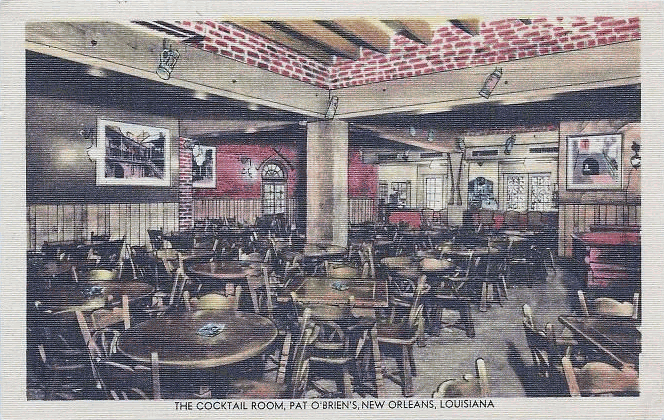|
Today in New Orleans History |
|
|
March 23


 Al Copeland Dies By 1989 (when this photograph
was taken) Popeyes was the third-largest chicken chain in the United States. During that same year, June 28 was declared “Al
Copeland Day” in both the city of New Orleans and the state of Louisiana. The International Franchise Association
named him the 1989 Entrepreneur of the Year. Other awards followed: the Louisiana Restaurant Association honored Al Copeland
with their first Service to Humanity Award, he was entered into their Hall of Fame in recognition of his many contributions
to the community, and he received the organization's Lifetime Achievement Award. As Copeland's wealth
and fame increased so did his flamboyant lifestyle. He became an award winning power boat racer and displayed his boats in
a windowed showroom for all of Metairie to see as they drove past it along the Interstate. In 1997, during a feud with then
vampire-themed writer Anne Rice over his renovation of a St. Charles Avenue car dealership into a Copeland's restaurant, he
threw garlic from his converted boat/float during Mardi Gras parades. A 2001 brawl at a local steakhouse with Robert Guidry
(who he had bid unsuccessfully against for a gambling license in 1993) landed Copeland and his wife in the hospital and Guidry
and his cohorts in jail. His extravagant weddings and controversial divorce were well publicized and topics of conversations
all over the area. His life was exceedingly successful and colorful but not long. Al Copeland died
at the age of 64, after a battle with Merkel Cell Carcinoma, on Easter Sunday March 23, 2008 near Munich, Germany where he
had gone to receive treatment for the rare but fatal condition. (Times-Picayune photo) Excerpt from
Legendary Locals of Metairie by Catherine Campanella  

To receive an update for each day in New Orleans
history, join our facebook page
- Today in New Orleans History
Born in New Orleans on August 20, 1922, Charles Schwartz, Jr. received a B.A. from Tulane in 1943
and served in the Army as a Second Lieutenant from 1943 to 1945. He was then an Army reservist from 1946 to 1965,
attaining the rank of Major. He received a J.D. from Tulane Law School in 1947, and was then in private practice in New Orleans
until 1976. He was a district counsel for the Gulf Coast District of the U.S. Maritime Administration from 1953 to 1962.
On March 23, 1976, Schwartz was nominated by President Gerald Ford to a seat on the United States District
Court for the Eastern District of Louisiana vacated by Herbert W. Christenberry. Schwartz was confirmed by the United States
Senate on May 6, 1976, and received his commission on May 7, 1976. He assumed senior status on February 28, 1991. He also
taught as an adjunct professor of law at Tulane University beginning in 1977. He died in his home town on November 3,
2012.
|
|
|

To receive an update for each day in New Orleans history,
join our facebook page - Today in New
Orleans History.
Analytics |
 As a boy Al Copeland and his family had lived for a time in the St. Thomas public housing project. He dropped out of high
school at 16 and after drifting through low-paying jobs he worked at a doughnut shops of which his brother, Gil, had an ownership
interest. Al bought his own shop in 1962 at age18. In 1971 he opened Chicken on the Run, serving mild-flavored fried chicken
and loosing money. Copeland changed the name and the recipe – serving spicy chicken at Popeyes Mighty Good Fried Chicken
(he named it for Gene Hackman's French Connection character Popeye Doyle). Renaming it again to Popeyes Famous Fried Chicken
he began franchising the restaurants and by 1976 eight-hundred Popeyes locations were operating in the U.S. and abroad. Some
500 outlets were added over the next 10 years, followed by 200 more.
As a boy Al Copeland and his family had lived for a time in the St. Thomas public housing project. He dropped out of high
school at 16 and after drifting through low-paying jobs he worked at a doughnut shops of which his brother, Gil, had an ownership
interest. Al bought his own shop in 1962 at age18. In 1971 he opened Chicken on the Run, serving mild-flavored fried chicken
and loosing money. Copeland changed the name and the recipe – serving spicy chicken at Popeyes Mighty Good Fried Chicken
(he named it for Gene Hackman's French Connection character Popeye Doyle). Renaming it again to Popeyes Famous Fried Chicken
he began franchising the restaurants and by 1976 eight-hundred Popeyes locations were operating in the U.S. and abroad. Some
500 outlets were added over the next 10 years, followed by 200 more.  During prohibition, North Carolina native Charlie Cantrell was running rum in Plaquemine. He was also a master of the
"Shake Up" which involved mixing grain alcohol with flavorings to create concoctions tasting like gin, whiskey,
rum, and other liquors. "Sometimes it wasn't too good, but it could get you drunk", said Cantrell. Benson
Harrison "Pat" O'Brien was a customer who bootlegged liquor back home to Birmingham. They became friends.
During prohibition, North Carolina native Charlie Cantrell was running rum in Plaquemine. He was also a master of the
"Shake Up" which involved mixing grain alcohol with flavorings to create concoctions tasting like gin, whiskey,
rum, and other liquors. "Sometimes it wasn't too good, but it could get you drunk", said Cantrell. Benson
Harrison "Pat" O'Brien was a customer who bootlegged liquor back home to Birmingham. They became friends. Charlie ran the business. Pat handled the customers. They were perfect partners for the business. During World War II,
Cantrell worked in a defense shipyard where he met George Oechsner, who would become the bars General Manager, taking Cantrell's
place and becoming part owner in 1947. In 1979 Oechsner's son George "Sonny" Jr. took over the role. It was
Sonny's idea to begin franchising and Pat O'Brien's bars sprouted up in
Charlie ran the business. Pat handled the customers. They were perfect partners for the business. During World War II,
Cantrell worked in a defense shipyard where he met George Oechsner, who would become the bars General Manager, taking Cantrell's
place and becoming part owner in 1947. In 1979 Oechsner's son George "Sonny" Jr. took over the role. It was
Sonny's idea to begin franchising and Pat O'Brien's bars sprouted up in 
